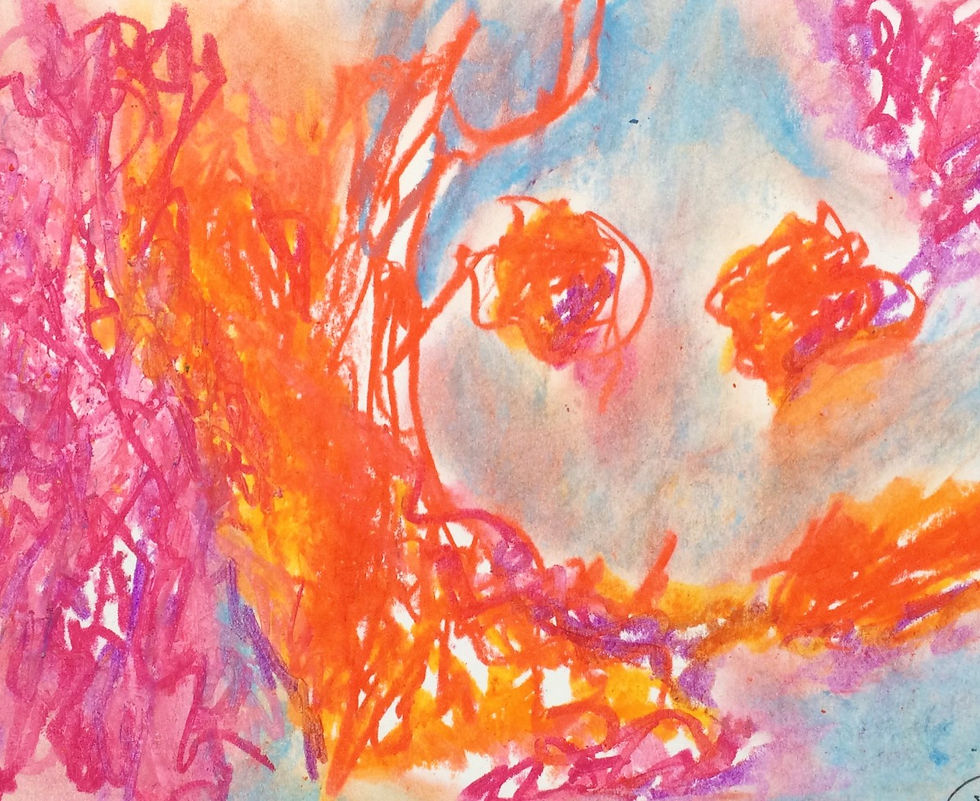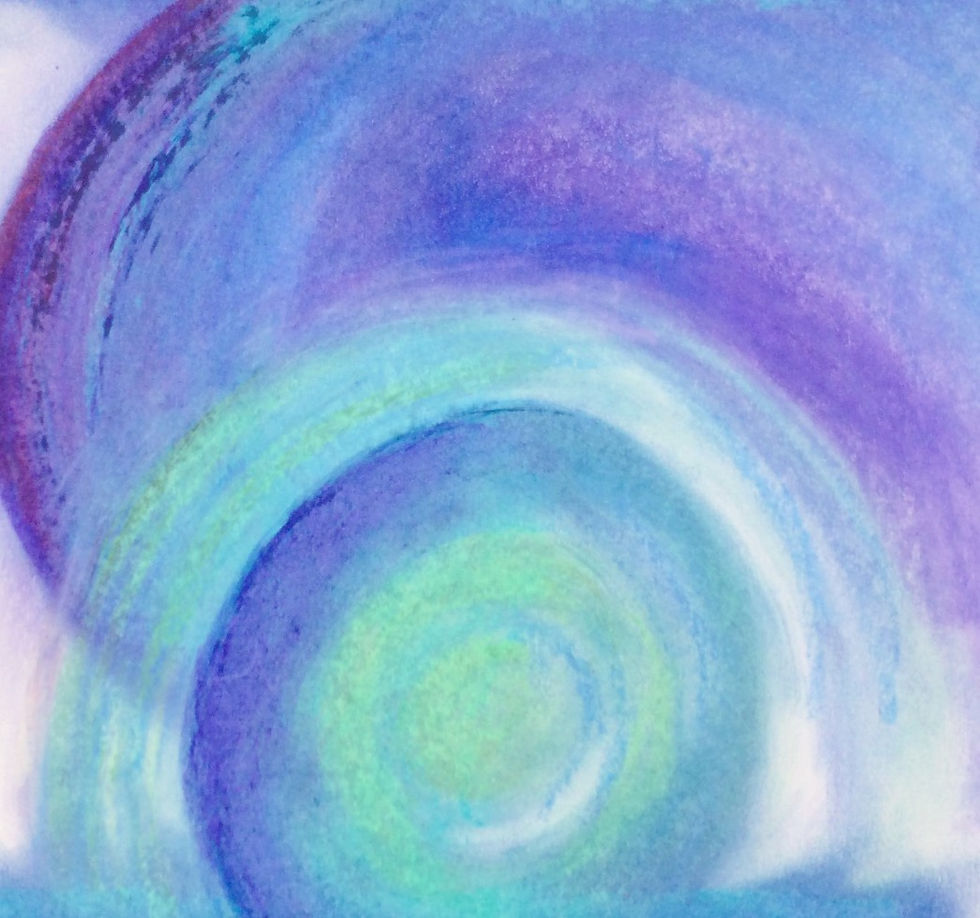What's your [digital] story?
- R.Gillmann
- Oct 15, 2018
- 4 min read
Updated: Feb 4, 2019
“Bedient sich ein freier Geist des Films, so ist er ein gefährliches
und ein wunderbares Instrument. Er bietet die beste Möglichkeit,
der Welt des Traumes, der Gefühle und der Triebe Ausdruck zu verleihen.
Der Film scheint zum Ausdruck des Unterbewußten geschaffen zu sein,
so tief wurzelt es in der Dichtung.
Dennoch kommt er diese Aufgabe fast nie nach.”
(Regisseur Luis Buñuel, zitiert nach Biedermann, 1989, S.27)
*Abstract taken from: Master of Arts thesis in Intermedial Art Therapy, by Regine Gillmann, 2016:
"An exploratory research on the experiences of engaging in video diary and video art, for adolescents and young adults within the context of psycho-oncology."
Films and videos have aesthetical qualities to which we are inevitably drawn to. Whether horror, drama, comedy or romance, we watch films and movies that engage our senses, stir our emotions, make us think, and let us challenge our beliefs. The diversity of features on digital devices such as smartphones, digital cameras, computers, laptops, and tablets has increased over the years, coming with user-friendly pre-installed software and editing programs that make personal filmmaking easier and more manageable for the lay person to experiment with than ever before. The sharing of privately made videos, personal stories, filming emotional experiences and videos on burdensome situations has become a common practice on social networking websites. Additionally, individuals seeking information, communication, and support, using the digital media as a platform for interpersonal yet virtual interaction has increased as seen in the number of online support-forums and networking communities on the internet.
As such, the expansion and development of technology and digital media are seen to have increasingly become desired methods for communication and forms of personal expression. Children and adolescents are rapidly following the trends of engaging with the newest technological devices, increasingly interacting with the virtual community of the world wide web (JIM-Studie, 2015). Within Germany for example, 89% of adolescents make use of a smartphone or cell-phone, and 80% use the internet on a daily basis, in contrast to 23% who make music and 16% who engage in the creative arts everyday (2015). In turn, digital media is changing human interaction, influencing the methods of sharing experiences and expressions, offering a multi-sensory form of self-expression through new tools of communication (Malchiodi, 2015).
The effects of digital media in therapeutic contexts have been explored as early as 1972 by Muller and Bader, who reported on the therapeutic aspects of filmmaking among psychotic patients working in group settings, and creating their own films (as cited in Johnson & Alderson, 2008). Its implementation in art therapy has also been documented dating back to the 1980s from work done by Diane Weinberg and Devorah Canter (as cited by Malchiodi, 2000).
Engaging in digital media, film and video within the therapeutic contexts show to increase emotional and psychological well-being, changes in self-esteem, increases feelings of mastery, it stimulates cognitive processes such as thinking, understanding, and learning, as well as purposeful and wilful actions. (Carlton, 2014; Craig, 2009; Johnson & Alderson, 2008; Reynolds et al., 2008). Engaging with therapeutic filmmaking also changes the perspective on difficult situations and problems, enhances self-understanding, changes one’s self-concept, and assists in discovering new aspects of the self (Johnson, 2015).
Be it photography, personal video clips, music, digital art, scans, vlogs, or animations, making a personal video these days is relatively easy to learn and handle with modern technology, downloaded apps on the phone or home computer. In digital art therapy, the art therapist therapeutically assists and emotionally supports the client / patient throughout the entire process. Together they work through the various stages of video making, from planning, storyboarding, script-writing, collecting/ making digital components, editing, finalising the video, as well as viewing and reflecting on the therapeutic process involved in the making of the video.
Points to reflect on:
How do we tell our story?
What role do we take in our story?
What role and function do others take in our story?
What powers do we place on to ourselves in our world?
How do we edit the story that we want to tell?
Reflecting on our own, self-made digital story or personal video, we discover our innate powers and gain increased functioning and coping in the world, as well as undergo a deep sense of personal reflection and insight.
Carlton, N. R. (2014). Digital media use in art therapy (Doctoral Dissertation). USA: Lesley University.
Craig, C. (2009). Fototherapie. Bern: Hans Huber.
JIM-Studie. (2015). Medienpädagogischer Forschungsverbund Südwest (mpfs). Jugend, Information, (Multi-)Media. Stuttgart: Medienpädagogischer Forschungsverbund Südwest.
Johnson, J. L., & Alderson, K. G. (2008). Therapeutic filmmaking: An exploratory pilot study. The Arts in Psychotherapy, 35, 11-19.
Johnson, J. L. (2015). Vision, story, medicine: Therapeutic filmmaking and first nations communities. In Cohen, J. L., Johnson, J. L., & Orr, P. P. (Eds.), Video and filmmaking as psychotherapy: Research and practice (pp.55-65). New York: Routledge.
Malchiodi, C. A. (2000). Art Therapy & computer technology: A virtual studio of possibilities. London: Jessica Kingsley Publishers.
Malchiodi, C. (2015). Foreword. In Cohen, J. L., Johnson, J. L., & Orr, P. P. (Eds.), Video and filmmaking as psychotherapy: Research and practice (pp.xiii-xvi). New York: Routledge.
Reynolds, F., Lim, K., & Prior, S. (2008). Images of resistance: a photonarrative enquiry into the meanings of personal artwork for people living with cancer. Creativity Research Journal, 20(2), 211-220.








Comments